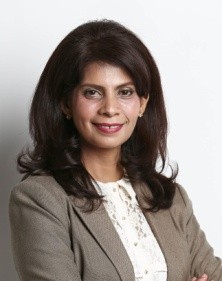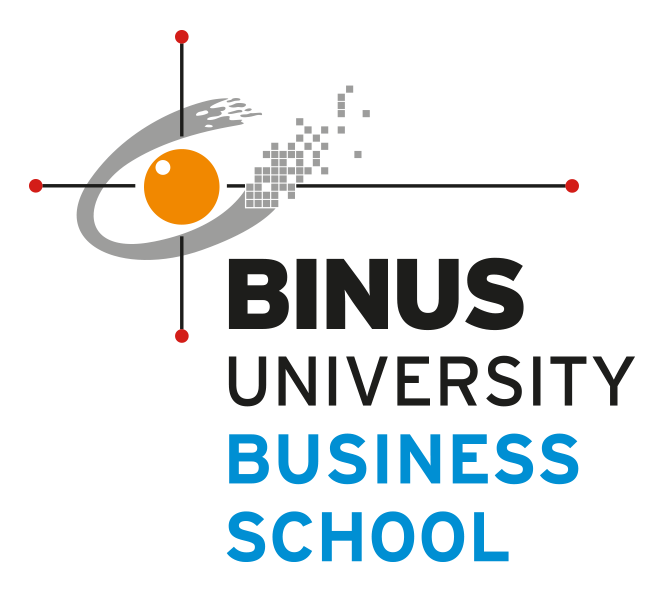Case Document
ASTRO: A SHORT JOURNEY PAY-TV IN INDONESIA
The growth of local and national TV station (that can be watched without any cost, also known as free to air – FTA) apparently do not followed by the increasing of quality of the program. In other words, although the amount of TV stations and programs are increasing, it was not the case with public’s satisfaction. Most TV operators offer similar shows
TV viewers feels that they don’t have other choice of program to enjoy, thus they have to follow existing programs. There are many complaints regarding shows that have physical, social and psychological violence, also SARA (harassment toward certain community, child abuse and things that are far from norms, religion and morality) elements. Most of parents are complaining because the TV show are recklessly made and stressing on commercial elements without considering the consequences.
The emerging of Pay TV operators in Indonesia give viewer new alternative for interesting programs. Unfortunately, pay TV’s market has not been developed thoroughly especially by the market leader, Indovision. Viewers amount is very low compare to its potential.
There are some opinions about conflict of interest between Indovision and the group of company that owned Indovision – MNC, due to their mutual ownership of RCTI and other FTA. If Pay TV penetration is high, it will take the portion of the successful TV station (RCTI) in the same corporation. Thus, until today, Pay TV’s market in Indonesia is not as big as other developing countries.
Consequently, the emerging of Astro, a new brand of pay TV brought fresh air for pay TV industry. With a strong spirit to penetrate the market, this brand aggressively and continually give customer a clear reason that it is time to have a pay TV.
Astro Nusantara is a pay TV operated by PT Direct Vision since 28 February 2006, a joint venture between Astro All Asia Network plc and PT First Media Tbk, sub company of Lippo Group. There are 48 kinds of channel, including 5 local channels produce and displayed exclusively by Astro, which are: Astro Aruna, Astro Ceria, Astro Awani, Astro Kirana and Astro.
Astro TV’s aggressiveness emerged even more when it controversially get the English Premiere League (EPL) broadcast license. The program that is usually enjoyed freely by every layer of society because it’s broadcasted at FTA TV, now can only be enjoyed by Astro pay TV customers.
Indovision’s respond regarding the emerging of Astro in the market is to make it as a prominent competitor. Indovision’s commercial tries to emphasized on Astro’s insufficiency. Whereas as a market leader, it’s Indovison’s task to extend market penetration toward FTA despite of fellow pay TV.
Issue that is brought in this case is to resume whether Astro’s strategy to increase customer base with EPL is a positive act for Astro’s brand equity development. The increasing of viewers amount that is not equal to many negative comments about this brand in many kinds of media, especially Internet.
Before the EPL issue resolves, Astro’s management faced other complicated problem, that is conflict between the stockholder which cost the end of Astro pay TV’s operation in Indonesia.
The three years broadcast time is filled by dynamics for Astro. As a new developed brand, it has to be taken from viewers that begin to feel the connection to the brand.
J.CO., IT’S NOT ONLY A DONUT
This case study illustrated how J.Co preparation to obtain consumer enthusiasm. The process of product preparation begins with comprehensive research of customer and development of the value concept from J.Co. Johnny, as the owner had a great vision and a keen intuition in seeing the market opportunity.
In the case study, we can learn about how the company formulates the value proposition offering to the market. This discussion can be analyzed through a hierarchy of values, also the product hierarchy. Further, we can learn how J.Co builds differentiation of products and services. After that, we will learn how J.Co delivers its offering toward store ambience and creating customer experience during consumption process.
ANGKASA PURA I: PARTNERSHIP PROGRAM AND ENVIRONMENT PROGRAM
This case study describes the implementation of CSR Programs since 2003 under Angkasa Pura 1, which were evaluated in 2007. Angkasa Pura is a state-owned enterprise (SOE) that manages public services and acts as an arm of the government in improving social welfare.
In this case, participants can learn how companies perform CSR program in two forms: the Partnership Program and the Environment Program. The Partnership Program is done by providing soft loans to small entrepreneurs as their capital and additional capital for their business development. This program has a great demand among small businesses because the procedure that is used is relatively easier compared to the process of borrowing money from banks. This activity can be categorized as corporate philanthropy.
Activities in the Environment Program provide assistance to communities in improving facilities for daily life. Some examples of activities that have been accomplished are the construction of roads, mosques (Muslim prayer houses), and public bathing facilities. These can be categorized as corporate social marketing.
MASSIV: BREAKING THROUGH THE MYTH
This case study is about how the company released new products in a market with a very high level of competition. The launching of the Massiv Green product was a big challenge for Mr. Hadi; consumer buying power fell, the number of imitation products grew, and there was no opportunity to enter the Original Equipment Manufacturing (OEM) market because it was dominated by market leaders who have been in partnership with car makers for decades. The fact, that majority of consumers replace their batteries with the same brand that the car had when it was first purchased, made the situation worse. In situations like these, circulation of myths regarding the existing dominance of these market players is very difficult to penetrate.
In this case participants will learn how companies breakthrough against the dominion of big players who had dominated the market for decades. The process begins with a comprehensive industry analysis, a Marketing Opportunity Analysis (MOA), and the execution of an integrated marketing strategy. We will also learn how a company fills an existing market segment without taking the market of its previous products; critically differentiate products owned by the company to avoid product cannibalism.
MAMA ROZ, BLUE OR RED OCEAN ?
Hendrik Setiawan, a young entrepreneur in fresh fruit juice, was preparing for his presentation. He's going to meet potential clients in the next few days. He got various alternatives to promote Mama Roz, a new brand of fresh fruit juice, which displayed some signs of success. Mama Roz was considered as the most saleable fresh fruit juice product in top class supermarkets.
However, he's wondering whether it was appropriate to call his marketing strategy as the blue ocean strategy? His potential client would understand this new concept. And so, he had to be able to present strong evidence that his marketing strategy was indeed blue ocean strategy.
In front of him lies the ethnographic report from Reny Virniati and Nia Kurnianingsih, graduate students of MM Strategic Marketing, Binus Business School. From this report, Hendrik should summarize the evidence from the field, as a resourceful feedback for his marketing strategy.
BHINNEKA.COM: BE ONLINE OR BE AVERAGE?
In December 2002, Hendrik Tio was ready for strategic meeting with board of directors to discuss the future of P.T. Bhinneka Mentari Dimensi. As Director and founder, Hendrik felt that the company has gone through a lot; Indonesian’s economic crisis in 1998, the dotcom crash, and now, once again, the company faced something that nobody was familiar with: the internet.
During economic crisis in 1997, due to deterioration of market buying power, Bhinneka was forced to diversify its business from IT solutions provider to a computer accessories manufacturer, furniture manufacturer and shrimp business. In June 1999, Hendrik decided that the company should return to its original business of providing IT solutions and insisted that the company start building its reputation as the pioneer of e-commerce by going online.
The dotcom euphoria didn’t last very long, because in 2001, the dotcom crash started. However, some strong companies actually survived the crash in US, such as Amazon.com. The same phenomenon happened in Indonesia. Some online shops such as Bebita.com, Dialmart.com, even Lipposhop.com could not get enough revenue to cover their operational costs; the only reason why they were still in the market was due to their belief that the internet would be the future of business. Bhinneka.com likewise was not making enough profit. However, it had gained high brand awareness due to its website and the number of visits grew steadily.
As Hendrik walked toward the meeting room, some thoughts came to mind;: should he stop the online retail business before it’s too late, or should he continue it by altering his existing business model? Some facts that happened around the world as well as in Indonesia worried him. What should Bhinneka.com do to maintain its position and grow given the unpredictable nature of cyberworld?
BREAKING THE INSTANT NOODLE MARKET DOMINATION: MIE SEDAAP (WINGSFOOD) VS INDOMIE (INDOFOOD)
Before the year 2003, Indomie domination (Indofood) in instant noodles market was unbeatable. It succeeded with hardly any competitors. Several attempts to take over the market share of instant noodle market was done by competitors and failed. Instead Indofood succeeded to defeat them. Even multinational company like Unilever which had skill to develop brand and wide distribution network tried to enter the instant noodle market to no avail. Mie&Mie brand (Unilever) was forced to exit market by Indofood. This also included the failure of Tara Nasiku, an instant rice brand launched by Unilever in 1999, with intention to switch consumer buying behavior from instant noodle to instant rice. Although the production budget and development of Tara Nasiku exceeded boundary of new product launching, consumers still preferred Indomie.
Initially, Indofood did not suspect that Mie Sedaap from Wingsfood would succeed in taking over the market share. Although Wings Group was long enough in toiletries industry, supported by solid marketing team and a wide range of distribution network, Indofood still believed that food business needed special expertise. And Indofood, indeed, did not think that Wingsfood had that. Indofood was not seriously counter the aggressive marketing activities done by Mie Sedaap. It could be said without any obstacles Mie Sedaap glided to the market.
Slowly Indofood’s Indomie domination broke down. Its market share fell. Their 90% market share in 1999 declined to only 70% in 2003. The national instant noodle market itself was worth 8 trillion rupiahs, thus Indofood’s sales decline disturbed the plan to increase their sales in the country.
What super strategies did Wingsfood use with its Mie Sedaap to overpower Indomie’s domination in instant noodle market? What effort and attempt did Indofood take to regain and restore their lost market? How were the consumers’ perceptions after of this noodle war?
YAMAHA JUPITER: FROM GLOBAL ADVERTISEMENT TO LOCAL TASTE
It was January 2006, when Bambang Asmarabudi turned off his remote control on television set in his room in Pulo Gadung office after seeing 30-second TVC (TV Campaign) of new cub, Yamaha Jupiter developed by Yamaha’s headquarter in Japan. He was fond of this motorcycle. The technology was awesome, it had fantastic design, it comprised shooting technique, good setting; it was flawless design and high product quality.
As Managing Director of Promotions and Motorsports, Bambang was involved in the company for 15 years. He started his career in motorcycle manufacturer. Actually, there was nothing wrong with commercial overall content. But he was not sure that the ad would be received by company target market, regarding taste and education level difference in Japan and Indonesia. He knew exactly what kind of people in Indonesia. And it did not match with TV advertising.
He watched thousand times of the commercial advertising of Yamaha Jupiter. He saw the sales report was plummeted during the first quarter. He was weighing the idea about having another type of advertising. The advertising that was easier to understand, better shaped, and reach the grass root community. So that they did not need to think, did not need to analyze, but the advertising still headed the new technology and design of the cub.
He then picked up his cell phone, rang the Vice President, Dyonisius Beti, asked for a time to discuss the matters that bothered him.
`HIGH REACH` DAYCARE: EXPANDING THE BUSINESS
The time was approaching 5.45 p.m. A mother was hurriedly moving towards an elevator in Jakarta’s golden triangle apartment while checking on her wrist-watch at times. Reaching the second floor, he sound of small kids could be heard coming from a Daycare with noticeable design on the same floor. As she approached the Daycare entrance, her face became radiant. She walked faster in order to see her sweetheart. Inside the Daycare, a cute little girl rushed towards the mother accompanied by a neat uniformed Daycare staff. She explained to the mother all the activities her daughter has done during the day according to the note written in the agenda. The mother listened to it with full interest while carrying her three years cute daughter.
Dr. Lukiarti, the Director and the person in charge of the daily activities of the High Reach Learning Care Institution was observing each of the picking up activities of the children under her observation. She also spoke to a few parents on the subjects that needed further explanation regarding the kids’ development. These routine interactions with parents are done to make sure that everything runs smoothly and under control.
After the children’s pick-up operation was completed, Ibu Luki, this was how Dr.Lukiarti was addressed by her colleagues, entered her office and sat down on a chair in the corner of the room. Her eyes did not show tiredness although she is in her early fifties. She quickly picked up a folder from the table which contained to pieces of proposals on the business development. For the past one week her mind had been preoccupied with these proposals. It was not a simple offer and hard to be chosen: Franchising the Daycare business which had been developed for one year or developing the business organically, collaborating with a few office buildings. The periodic meeting of the High Reach founders / share holders would be held in an hour’s time. The discussion on the development of this Daycare business was one of her agendas. She picked up her glasses and started making deeper analysis on the pros and cons of the two offers.
STARBUCKS INDONESIA: BACK AND FORTH IN CUSTOMER’S PERCEPTION
One still could vividly remember when Starbucks first opened its first store at Seattle, United States of America on 1972 and the hype suddenly went breakthrough like a wildfire from the State only into nationwide and upon 1996, Howard Schultz as Starbucks’ owner decided to go international.
It wasn’t long before that when Starbucks opened its first store in Indonesia and the buzz that already went along the words that already whispered in everyone’s ears gone crazy. The cozy ambience and the promise of “delivering the best coffee only for you” from the company to the consumers have been the magic words among Indonesia’s socialite and all in sudden, Starbucks’ coffee stores flocked with people. Now everybody could enjoy their nice cup of Frappuccino™ or Café Americano at the good-looking place with sweet and slow jazzy tunes at every Starbucks coffee store or simply grab the signature cup of Starbucks and bring it everywhere, be it campus, school, office or simply for hangout purpose.
The opportunity for Starbucks at that time when they entered Indonesia market was still big for there were only several small players at Indonesia. Coffee store and café business never been taken seriously and people accepted coffee-drinking activities as side activity which did not have any added value for any other means. Indonesian even didn’t recognize coffee as one of their primary habits. However, the hype started around 1999, not so long after the crisis that hit several regions at Southeast Asia. Indonesia, by any means, considered as a very interesting place for Starbucks to expand. However not so long after the trend started, recently nowadays Starbucks isn’t the only player at Indonesia. Thanks for the hype and buzzwords, more and more competitors barged into the market, be it from foreign players (Gloria Jean’s Coffee, The Coffee Bean and Tea Leaf) or domestic players (Bakoel Koffie, Bengawan Solo Coffee) and all of them even offered similar beverages and “experience” as same as Starbucks. They create same ambience, same coffee and even, same packaging – only in different brand name and label.
This kind of situation forced Starbucks to think hard and long because even though Starbucks already got big name and big time at United States where it is originally came from, the market in Indonesia is totally different. They are playing at different culture, different consumer’s expectations and even different purchasing power and Starbucks realized it clearly that in order to survive in this volatile market of Indonesia they should take the right approach.




